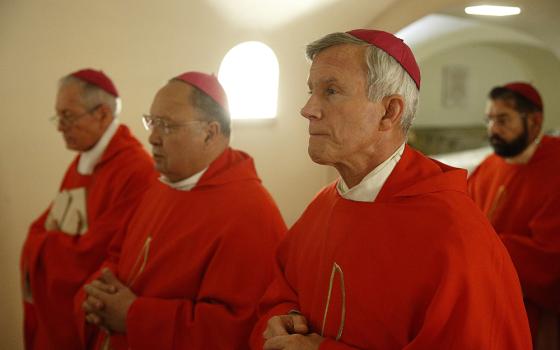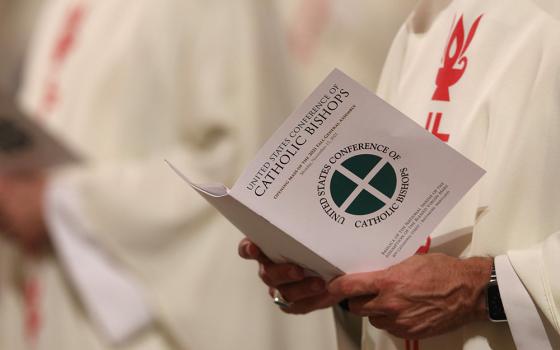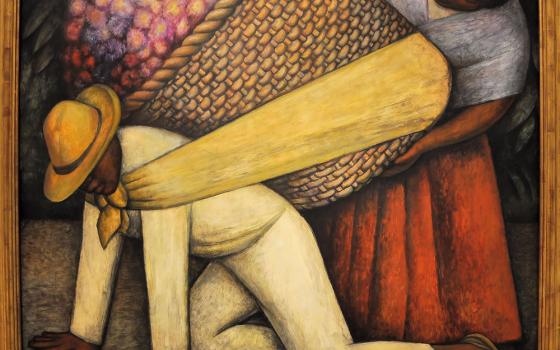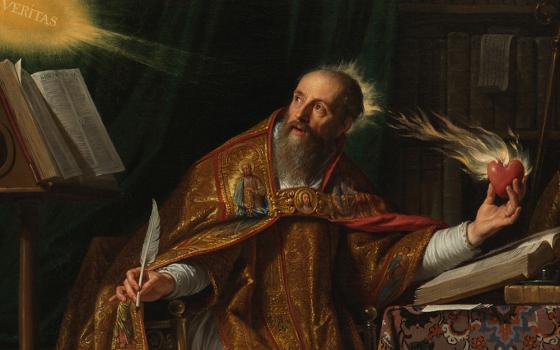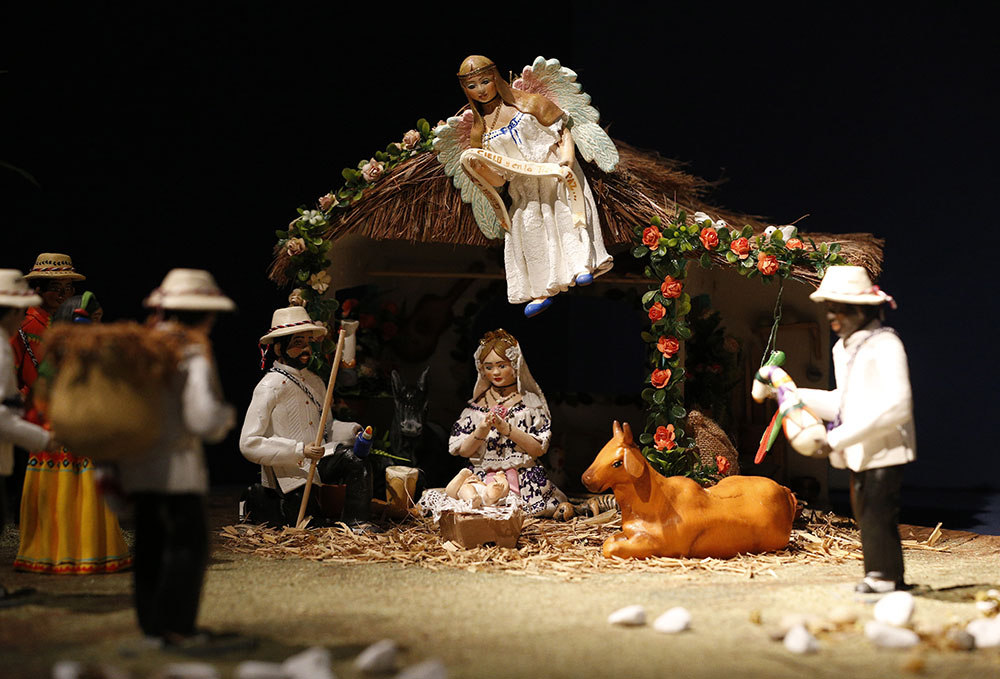
A Nativity scene given by Panama's Embassy to the Holy See is pictured at an exhibition of 100 Nativity scenes at the Vatican Dec. 7, 2018. (CNS/Paul Haring)
If you happen to be in Rome on Christmas Day, you can visit the Vatican's featured Nativity scene from Peru. It's populated by some 30 characters — people and animals — authentically garbed and posed as contemporary folks from the Andean highlands. The Magi might be mistaken for extra shepherds as they accompany their llamas laden with the fabulous foods people of the area have enjoyed since before the time of the Incas.
This is a cultural translation or interpretation of the meaning of the Incarnation. The Italian tourism industry expects more than 100 million people to see the display — whether in person or virtually.
If we could anthropomorphize a little (When would it be more appropriate than at Christmas?), we might imagine the Trinity taking great pleasure in this and myriad other representations in which people depict the Holy Family and the rest of the cast in their own style of dress and following local customs.
The people who do that have captured the message of the Incarnation: God decided to be like us to give us faith in our divine potential.
Imagining the Trinity being entertained and pleased by our various Nativity scenes may not be so far fetched from a scriptural point of view. Today's reading from Isaiah portrays God shouting to the ends of the earth to let everyone know that a savior is on the way. For whom? For Israel, and by extension for people who have felt sinful and/or forsaken. And that's a list that can include everyone!
When these chosen people receive the God who comes, their identity will be transformed. They will know themselves as holy, as a community permeated with the presence of God.
Christmas emphasizes the fact that ours is a God who does something more than just sit around the heavens! The Letter to Titus underlines this with one of Paul's favorite themes: God's love took flesh among us, not because we deserved it, but because of God's great love. If there were one question we might imagine God asking to sum up the motive for the Incarnation it is, "What can I do to help you?"
The Fourth Eucharistic Prayer reminds us of this in the form of a prayer of praise that says, "Time and again you offered [us] covenants ... so that those who seek you might find you."
Advertisement
Today, Luke presents the shepherds as models for disciples, and an interesting lot they are. While Scripture frequently presents shepherds as models for leadership, we do well to remember that they have not always enjoyed a sterling reputation.
Not only are there the bad shepherds like the ones Jeremiah described, but shepherding was anything but a prestigious occupation. It requires so little that it is often left to the very young or very old.
Additionally, in the time of Jesus, the educated classes typically accused shepherds of grazing their sheep on private land or poaching sheep from other flocks. Then there's the fact that their profession prevented them from observing the Sabbath and other requirements of the law.
These were the people to whom the angels announced the birth of the savior and who responded by dropping everything and saying, "Let us go and see!" If that sounds like Jesus' call to his followers, we can assume Luke wanted it that way.
Listening and seeing transformed the shepherds, making them the first evangelizers. Isaiah's promise came true through them, and they led others to wonder.
According to Luke's tale, the simple shepherds, like Mary, heeded the message of angels, investigated and then "made known the message." Listening and seeing transformed the shepherds, making them the first evangelizers. Isaiah's promise came true through them, and they led others to wonder.
Luke tells us that as Mary witnessed, she "kept all these things, reflecting on them in her heart." Perhaps the shepherds could proclaim what they had seen because, in comparison to Mary, they had seen so little — just some angels and a baby.
Mary was the one through whom all of this was happening. She had believed the angel's message and become pregnant, she had shared the wonders and wonderings with Elizabeth, she had seen Joseph miraculously stand by her, and she had given birth to this child of God in the humblest of circumstances, where they had not even their own roof over their heads. The mystery was more than she could have explained, she could only live it in ongoing everydayness.
Today, we celebrate God's entry into our everydayness. Our Nativity scenes remind us that God has taken flesh like ours as one of the humblest. Luke invites us to enter into the scene with both the shepherds and with Mary.
At times, we can proclaim the amazing, simple news of God's nearness. We can also give ourselves time to enter deeply into mystery and grace to be so awed that words cannot suffice.

